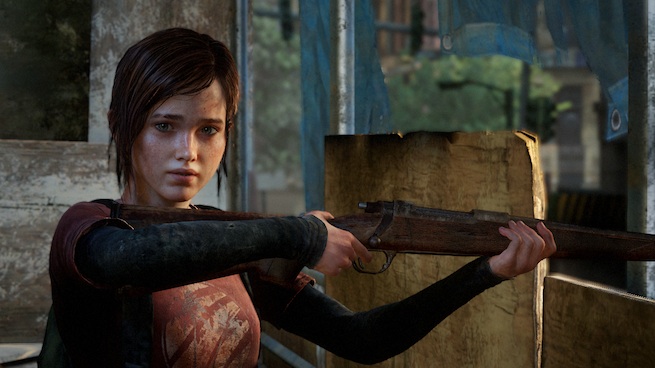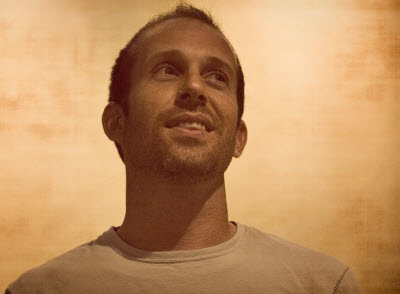This interview has story spoilers.
Naughty Dog’s The Last of Us has turned into the runaway success of the summer,and it will likely go down as one of the most successful and memorable PlayStation 3 exclusive titles of all time.
I was deeply touched as I played the game. It made me think about so many questions as I reached its ending, which comes full circle with the first 15 minutes of the story. Joel and Ellie, two survivors of a zombie apocalypse, are superbly crafted characters who bring deep emotions out of each other at a time when the world has fallen apart.
After I played the game, I felt a deep need to get answers from the creators. More than anything, I’ve been haunted by the beautiful and disturbing beginning and ending of this game. Neil Druckmann, the creative director for The Last of Us at Naughty Dog, and game director Bruce Straley are about to move on to something else. But just in time, while the experience of creating the game is still fresh in their noninfected brains, I caught up with them.
No, I didn’t hold a gun to their heads. But they still answered every question I had. They talked to us in a comprehensive wrap-up interview, and this is an edited transcript of part two of our extended interview. In this part, they talk about the gameplay design decisions they made that gave the title its unique feel, and why and how they created the game’s memorable beginning and ending.
For part one of the extended version of our interview, please check out this link. For an excerpt on the game’s depiction of female characters, please check out this link. Here is another excerpt on the beginning and ending, our excerpt on gameplay decisions, and our excerpt on the inspirations for the game.
The gameplay decisions
GamesBeat: This game, in a lot of ways, made me feel like it was a sort of un-game. You’re not doing a lot of the things that you usually do in a game. You’re not quickly reloading all the time or mowing down lots of enemies. Can you talk about that approach and how difficult it was to pull off?
Bruce Straley: We knew that we had something special as far as paralleling the emotions of the characters in the world and the emotions that players would feel. We wanted to create a lack – a lack of supplies, a lack of everything else. You’re not building yourself into a tank. Every decision we made, it wasn’t about creating all these extra moves and things. If this is a middle-aged man, I have to believe that this is how this man could move around the environment and manipulate his surroundings and use weapons. He’s not a Navy SEAL or a space marine. He’s just a guy trying to survive.
That was motivating a lot of our design decisions as far as the weightiness of the animations and the risks and the rewards. It doesn’t take so many bullets to put somebody down, but it takes more punches. We wanted to get that equation right. This is the tempo or the pace that’s going to take somebody down, which then creates a strategy. The player has to think, “If I engage this person stealthily, it’ll take this much time to do it. Do I have that time? Would I rather distract them? Would I rather find a two-by-four, because that will be faster?” We’re trying to parallel these different systems, each with their own weight to them, to create an equation in the player’s head and let them go about strategizing and surviving each of those encounters. It made you, as a player, feel that this is the kind of brutal existence it would take to survive. Surviving sometimes means killing a human, which isn’t a pleasant act.
GamesBeat: Yeah, sometimes I was really happy to have two bullets. I did wonder about the one superhuman power that Joel did have — the hearing, the ability to figure out where the enemies were. Can you talk about that?
Straley: Listen mode came in about halfway through development. We were trying to ground it, in that it is something a human can do. You can focus your attention and try to suss out what’s happening inside the environment. The visualization might be interpreted as some sort of magic. I guess that’s one of those—I shrug my shoulders and concede.
What I was feeling when we were testing out some of these scenarios was that it wasn’t fun and I couldn’t strategize properly without getting some information back about where the AI was in the environment. Our AI is so dynamic. They respond to distractions. They regroup. They search the area and split up the environment in very intelligent ways. Most stealth games, it’s a spline, a patrol path. This is much more dynamic than that. When you have a very convoluted environment like the interior of the hotel space – multiple rooms, high occlusion levels – I don’t know the timing of what a guy is going to do. Is he going to come out of the hallway and bust me or not? I couldn’t strategize.
We talked about how we could create a system that would allow stealth strategy, but at the same time, ended up being more grounded. Focusing Joel’s hearing was our solution for that.
Neil Druckmann: At the same time, we recognize that there are hardcore gamers who want that challenge and want to really slow things down and take their time with each setup and not have this ability. They want to just use their surround-sound headphones and hear where guys are. We gave them the ability to turn it off. We also had the survivor mode. If you play on the most hardcore setting, you can’t have listen mode.
GamesBeat: It took me about 22 hours to finish. That probably tells you I had to replay a lot of things. I’m not a very good gamer. But I wonder if there are any statistics coming back to you that tell you how long people are playing or where they’re having difficulty.
Druckmann: We usually track that data. Then we had a bug and we had to turn it off, so unfortunately we don’t have much. We know that average playthroughs are somewhere around 15 to 20 hours. It’s a pretty big window. There’s a lot of difference the pace and approach. If you scavenge a lot and crouch a lot, you can go pretty aggressive and get through things, if you’re a pretty good player. But we’re trying to make you slow down and think more about how you’re going to handle the scenario. The times are higher than any other Naughty Dog game we’ve made.




